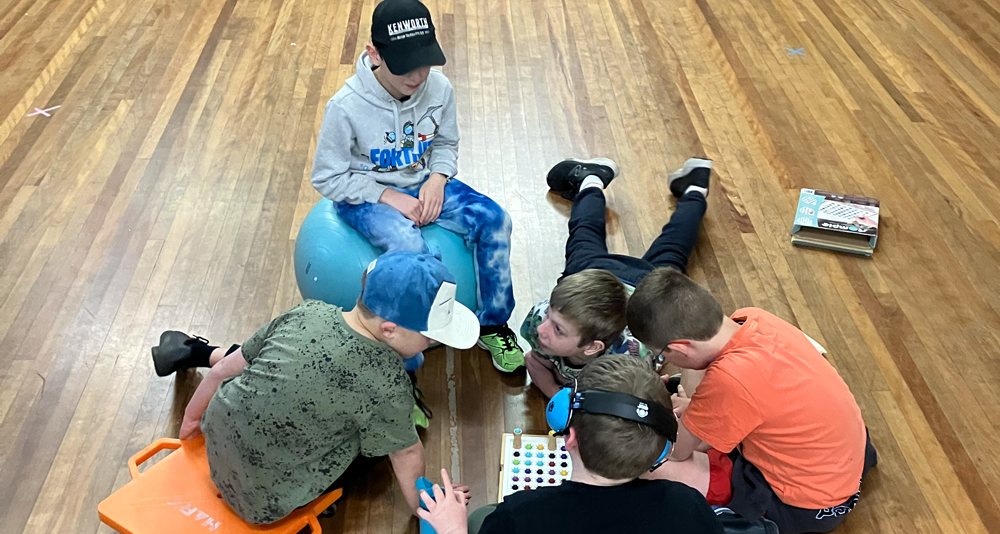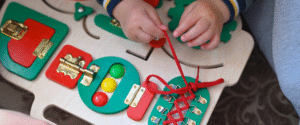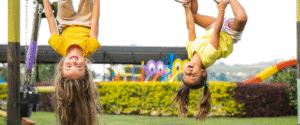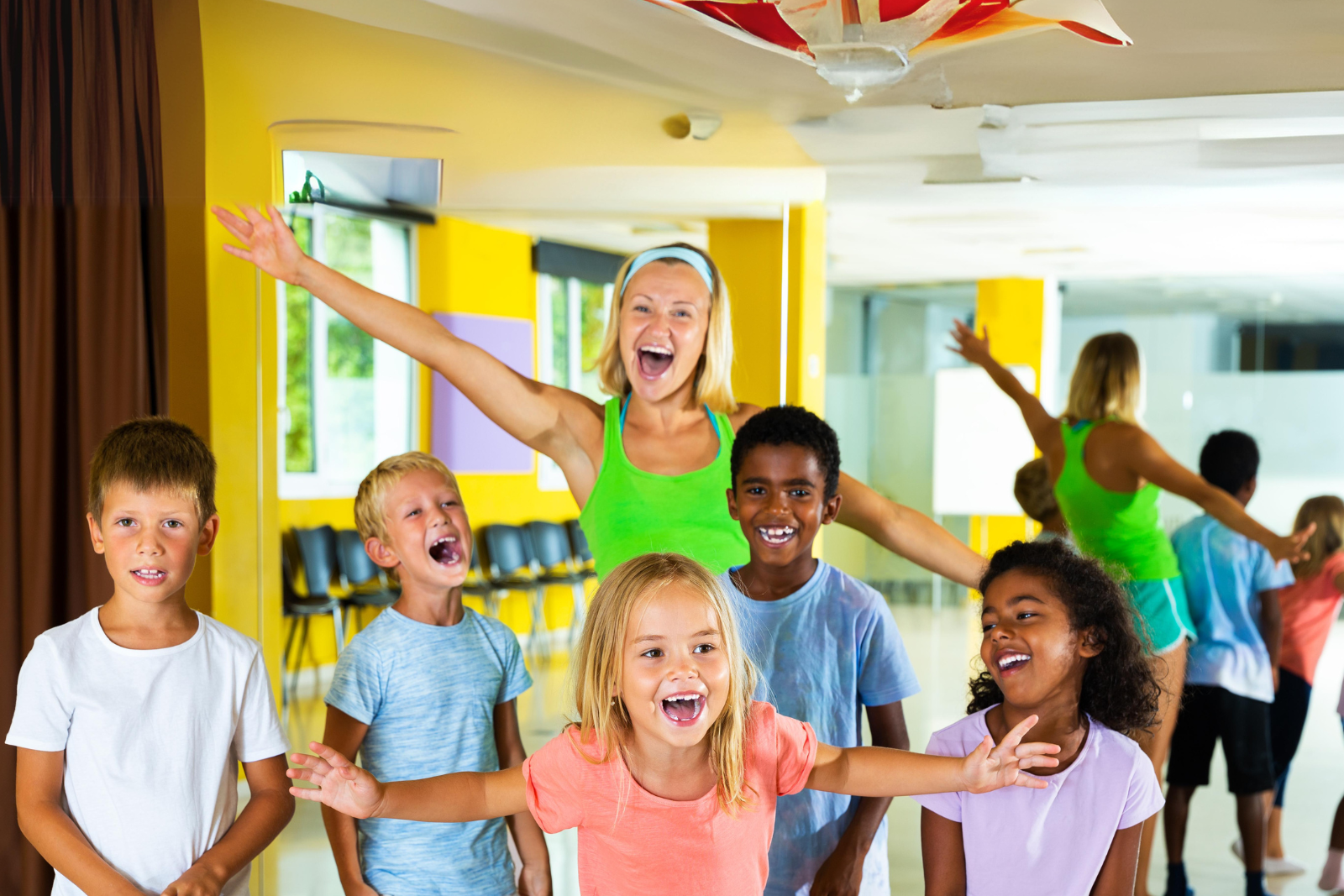
NURTURING IMAGINATION AND SOCIAL SKILLS IN TODAY’S DIGITAL WORLD
In our fast-paced digital era, fostering social skills in children is more crucial than ever. These skills are the cornerstone of effective communication, relationship-building, and navigating social situations.
As children grow, their social development equips them with tools to handle conflicts, understand emotions, understand social roles, solve problems, and adapt to changes. However, in a world dominated by technology, the landscape of social interaction is evolving.
Embracing Technology for Social Growth
While children increasingly engage in online activities like online gaming, it’s essential to recognise the potential for social skill development in digital spaces. Online platforms offer unprecedented opportunities for connection, creativity, and sensory input, enriching social experiences in new ways.
Challenges in the Digital World
Despite the benefits, parents’ concerns about online safety and screen time persist. By fostering open communication, setting boundaries, educating on privacy, and serving as positive role models, parents can guide their children through the digital landscape with confidence and resilience. The skills they learn while playing virtual games can also translate into real-world social connections.
Exploring Social Thinking Concepts
Our children may encounter difficulties in participating in imaginative play and sustaining conversations. Sharing what someone else is imagining involves complex processing! It requires focusing your attention on what the other person is doing, interpreting the person’s words and actions, and then placing those ideas in the context of what you already know about the person and the environment.
Incorporating Social Thinking Concepts
Incorporating social thinking concepts helps promote self-regulation in social contexts.
Social executive functioning is important for classroom learning, playing, joining in activities, and online social interactions. It can be divided into four categories: Hidden Rules, Smart Guesses, Flexible and Stuck Thinking, and Size of the Problem.
Hidden Rules, Expected and Unexpected Behaviours –
Understanding the unspoken rules of social interactions, known as ‘Hidden Rules,’ is crucial for navigating various situations. It involves aligning our behaviours (what we say and do) with social expectations through skills like interpreting non-verbal cues, social cues, negotiation, collaboration, problem-solving, compromise and empathy.
Various events, such as turn-taking or winning, may occur during activities like gaming. While adhering to expectations may not always be enjoyable, it ensures smooth progression. Unexpected actions can lead to discomfort among peers, highlighting the importance of social cohesion.
This concept can be challenging for many children, especially when games hold significant meaning. Collaborative efforts with families, including sensory diet activities, help foster self-regulation and engagement during challenging situations.
Smart Guesses –
Making informed guesses, known as ‘Smart Guesses,’ is foundational for social and academic problem-solving. It involves observing cues from peers and anticipating the outcomes of social interactions. In contrast, ‘Wacky Guesses’ are often inaccurate and stem from a lack of information.
To make a Smart Guess in social interaction, we need to figure out what people mean by what they say, and we try to figure out what someone’s facial expression or gesture means and what will happen next.
This is something that can be a challenge for our children. Here are some strategies to support Smart Guess development:
- Observation: Encourage children to notice everyday clues in their surroundings, aiding in making informed guesses about others’ thoughts and plans.
- Guided Narration: Provide guidance during games or activities, helping children interpret and plan for potential outcomes.
- Interactive Games: Engage in games like “Guess Who,” prompting children to observe, listen, and think critically about their environment.
By implementing these strategies, children can enhance their social insight and navigate interactions confidently and accurately.
Flexible and Stuck Thinking –
A high level of flexibility is needed to consider and adapt within social interaction. In any given situation, we are expected to consider where we are, who is there, what is happening, what people are saying and doing around us, how they are feeling, and what they might be thinking, and adjust our plans and behaviour accordingly.
A challenge in any of these areas can lead to getting “stuck” in Stuck Thinking.
Flexible Thinking means we can change our plan, try a different solution to a problem, change our thinking, or give up what we want based on the larger plan of the group.
Stuck thinking is the inability to change what we are doing or thinking based on what is happening around us. If we are Stuck Thinkers, we might see a problem or situation in only one way or follow one rule all the time, no matter where we are or what is happening around us.
Teaching flexibility begins with understanding that there are multiple ways to approach a situation, fostering problem-solving skills and a sense of control. Empowering children to recognise choices and alternatives makes them more comfortable with change, reducing frustrations and promoting active participation.
Incorporating “Flexible Thinking” and “Stuck Thinking” vocabulary in daily activities reinforces these concepts, facilitating smoother adaptation and enhancing social interactions.
Size of the Problem –
In daily life, a ‘problem’ is something that happens that is not part of the plan and makes people feel uncomfortable. Problems cause emotions and reactions of different sizes, and the size of the emotions and reactions are expected to match the size of the problem.
Problems come in different sizes –
Small problems can be resolved quickly, and children can handle them independently or with minimal help from others. Children can also aid each other in resolving minor problems, promoting collaboration and empathy.
Medium problems require more time and usually will need assistance from adults.
Big problems take significant time to resolve and require extra help from others. When big problems happen, even adults may need help from other adults.
It’s crucial to acknowledge that everyone has the right to their own emotional reactions, shaped by their hardwiring (temperament) and life experiences. Encouraging children to understand the varying sizes of problems fosters emotional intelligence and resilience.
Parents can also model problem-solving behaviours and narrate their experiences to reinforce this understanding. This includes identifying the problem’s size, emotional reactions, and potential solutions. For example, what happened? What was the problem’s size? How did you feel about it? What did you do to solve it? How did you feel afterwards?
How Can Explore and Soar Help?
As Occupational Therapists, we target underlying regulation strategies to help children maintain and shift their attention and concentration to activities and navigate their thoughts, feelings, and actions.
We implement ‘Social Thinking Concepts’ ideas within one-on-one sessions, peer sessions, group programs, and parent education to facilitate the transition into the home environment. You can learn more about our group programs on our website.
Empowerment and Positive Behaviors
By encouraging children to share ideas and imaginations, we help them learn the skills that are crucial for more sophisticated social interactions and conversations with their peers. Implementing social thinking concepts can support and scaffold their social interactions, empowering them with confidence, resilience, and a foundation of positive social skills that endure throughout their lives.
During gameplay, it’s vital to acknowledge and reinforce positive social behaviours, such as good sportsmanship, cooperation, and empathy. By consistently praising these behaviours, we reinforce their importance and encourage their continuation.
Join us in nurturing our children’s social skills and imagination. Together, we can shape a brighter future filled with confident, resilient, and socially adept individuals. Give us a call today if you would like to find out more.
If you’d like to chat more, please don’t hesitate to contact us today! Call us on 0477 708 217 or email admin@exploreandsoar.com.au
Until Next Time,
Maddie
PUBLISHED APRIL 2024
References – We Thinkers! Volume 2 Social Problem Solvers







